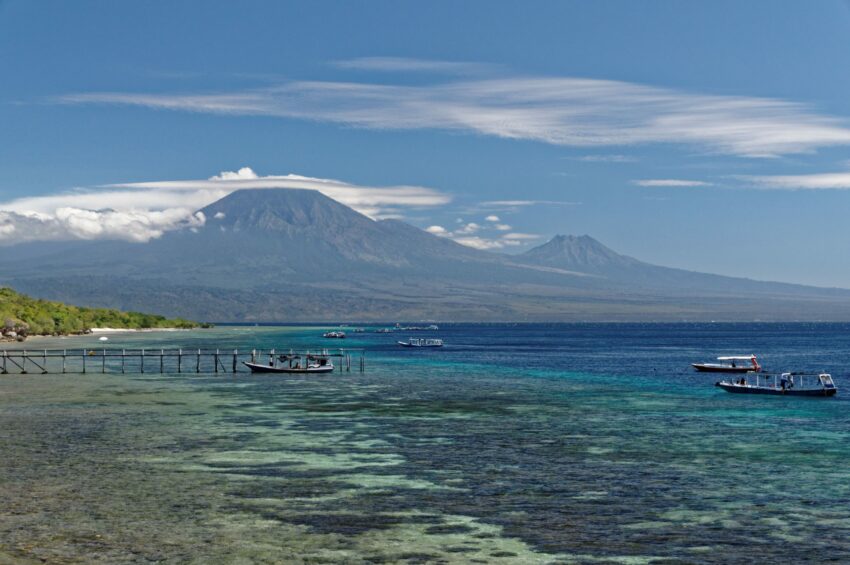Traveling through the Mountains of Bali After Scuba Diving

Can I travel to South Bali after scuba diving?
This is a common question we are asked by our guests. It is well understood that flying after scuba diving greatly increases your risk of decompression sickness. But what about visiting or traveling through mountains after diving?
The island of Bali has spectacular scuba diving along the coasts. It also has a 2,000 meter high mountain range in the center of the island. Which results in the questions about traveling through the mountains of Bali after scuba diving.
Altitude is any elevation higher than sea level. It doesn’t matter whether you are in a plane, automobile, motorbike, or using your own
two feet, exposure to altitude after scuba diving is to be strictly avoided to reduce the risk of decompression sickness.
What is Decompression Sickness?
Sometimes referred to as “the bends”, decompression sickness (DCS) is a dive-related injury that may occur if a diver fails to decompress properly following exposure to pressure. While diving, we absorb nitrogen in our body tissues. This poses no issues until we begin to ascend to decreased pressure. If we ascend to quickly (fail to decompress), the nitrogen can form bubbles in our tissues or blood. These bubbles can result in injury and, potentially, death.
What Does Altitude Have to do With DCS?
Dive computers base their calculations on returning to sea level after diving. Any increase in altitude beyond sea level may cause nitrogen bubbles to expand. Research completed by DAN (Diver’s Alert Network) and Duke University have shown that ascending to altitudes above 610 meters (2,000 feet) after diving significantly increases the risk of DCS.
This research informed the following standard “flying after diving” guidelines:
-
A single dive within NDL (no-decompression limits) in a single day requires a minimum of 12 hours before ascending to altitude.
-
Multiple dives per day – or multiple days of diving – within NDL requires a minimum of 18 hours before ascending to altitude.
-
Technical dives, or any dives that exceed NDL, require a minimum of 24 hours before ascending to altitude.
Failure to follow these guidelines may result in injury or death. These guidelines should be consider when planning your itinerary for your dive holiday.
Dive Itinerary Considerations
Altitude is no reason to miss diving at the infamous Menjangan Island. The muck diving at Puri Jati, or the variety of dive sites in Pemuteran Bay. It is, however, something that should be considered when planning what you are going to do after you finish diving in North West Bali.
If you are diving in North West Bali and planning to return to South Bali the same day, it is possible only if you follow a coastal route. You must not drive through the mountainous regions of Bedugul, Munduk, and Pupuan. Better to add an extra hour on the road than spend your precious holiday time in a hyperbaric chamber!
If you plan to go to Bedugul, Munduk, or another mountainous location after diving, you need to wait the recommended time per the “flying after diving” guidelines. Simply stay the night and relax in Pemuteran for the required number of hours before moving on!
There are numerous non diving activities available in our area that are great ways to spend your time decompressing. We would be happy to help you organize some of these activities.